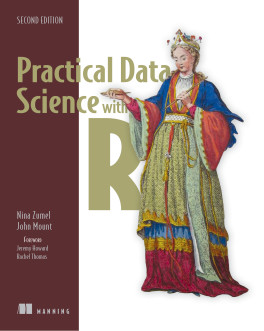pro $24.99 per month
- access to all Manning books, MEAPs, liveVideos, liveProjects, and audiobooks!
- choose one free eBook per month to keep
- exclusive 50% discount on all purchases
- renews monthly, pause or cancel renewal anytime
lite $19.99 per month
- access to all Manning books, including MEAPs!
team
5, 10 or 20 seats+ for your team - learn more

Look inside
Time series analysis is an essential tool for data forecasting, allowing data analysts to make predictions about the future events and track relationships between data. In this liveProject, you’ll utilize the Python data ecosystem and time series analysis to analyze the spread of the COVID-19 virus in different parts of the globe.
Your goal is to make near-future predictions about virus spread based on your available data. You’ll start with an exploratory data analysis into the types of data you have access to, establishing the kind of questions it can reasonably answer. You’ll then develop an ARIMA model for time-series forecasting. Finally, you’ll develop an interactive Voilà dashboard using ipywidgets that will allow stakeholders to access and understand your analysis.
Your goal is to make near-future predictions about virus spread based on your available data. You’ll start with an exploratory data analysis into the types of data you have access to, establishing the kind of questions it can reasonably answer. You’ll then develop an ARIMA model for time-series forecasting. Finally, you’ll develop an interactive Voilà dashboard using ipywidgets that will allow stakeholders to access and understand your analysis.
This project is designed for learning purposes and is not a complete, production-ready application or solution.
prerequisites
The liveProject is for intermediate Python programmers who know the basics of data science. To begin this liveProject, you will need to be familiar with:TOOLS
- Basics of NumPy and pandas
- Basics of Matplotlib/seaborn/Plotly
- Basics of Jupyter Notebook and ipywidgets
- Basics of machine learning
- Familiarity with time series analysis
 features
features
- Self-paced
- You choose the schedule and decide how much time to invest as you build your project.
- Project roadmap
- Each project is divided into several achievable steps.
- Get Help
- While within the liveProject platform, get help from fellow participants and even more help with paid sessions with our expert mentors.
- Compare with others
- For each step, compare your deliverable to the solutions by the author and other participants.
- book resources
- Get full access to select books for 90 days. Permanent access to excerpts from Manning products are also included, as well as references to other resources.
choose your plan
team
monthly
annual
$49.99
$499.99
only $41.67 per month
- five seats for your team
- access to all Manning books, MEAPs, liveVideos, liveProjects, and audiobooks!
- choose another free product every time you renew
- choose twelve free products per year
- exclusive 50% discount on all purchases
- renews monthly, pause or cancel renewal anytime
- renews annually, pause or cancel renewal anytime
-
![]() Predicting Disease Outbreaks with Time Series Analysis project for free
Predicting Disease Outbreaks with Time Series Analysis project for free



















 Predicting Disease Outbreaks with Time Series Analysis project for free
Predicting Disease Outbreaks with Time Series Analysis project for free